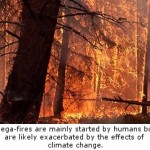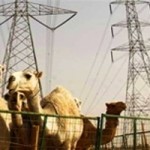
Cancún – At the UN Climate Change Conference in Cancún, the two bodies under the United Nations Framework Convention on Climate Change (UNFCCC) which advise and implement Parties’ decisions on climate action successfully concluded their work on Saturday with a number of significant draft decisions that will be put forward for adoption in the final plenary of the conference on 10 December.
The two groups are the Subsidiary Body for Scientific and Technological Advice (SBSTA) and the Subsidiary Body for Implementation (SBI).
The draft decisions included decisions on continued, strengthened support to developing countries efforts in adaptation and mitigation, including concrete technology transfer projects.
“These advances form an important part of the ground-work for strengthened global climate change action. They also clearly show that countries have come to Cancún in good faith to show the world that the multilateral process can deliver as long as a spirit of compromise, cooperation and transparency prevails,” said Patricia Espinosa, President of the Conference and Secretary for Foreign Affairs of Mexico.
“The advances should be seen as a positive sign for the conference as a whole. I urge all Parties to sustain this spirit and bring all outstanding issues to a successful conclusion by the end of the Cancún climate change conference, to reach a balanced agreement that will take the world into a new era of cooperative and increasingly ambitious action on climate change,” she added.
The decisions included a near agreement that carbon capture and storage may be an eligible project activity under the Kyoto Protocol’s Clean Development Mechanism (CDM), provided it complies with stringent risk and safety assessments. The move is significant because it presents ministers – who will be asked to give political guidance to the negotiations next week – with only two clear options on the issue.
“This conclusion is important because it gives Parties a key to unlock other outstanding issues under the two tracks of the negotiations on Long-Term Cooperative Action and in the Kyoto Protocol,” said UNFCCC Executive Secretary Christiana Figueres.
Another achievement was a decision to broaden the mandate of a Least Developed Countries (LDC) Expert Group and extend its mandate for a five-year term, the longest period given to the Group since its establishment in 2001. The Group provides technical guidance and advice to LDCs on the preparation and implementation of National Adaptation Programmes of Action (NAPAs). Since commencement of its support, 45 LDCs have successfully completed and submitted their NAPAs, 38 have initiated implementing adaptation on the ground, and the process has left a wealth of capacity and awareness across the countries from political levels down to community levels.
Countries also agreed to strengthen education, training and public awareness on climate change through increased funding for such activities, and to engage civil society more strongly in national decision-making and the UN climate change process.
“Faster and more effective action on climate change requires governments to welcome the fresh ideas and active participation of all sides of civil society, especially the young whose futures are at stake. This underlines the commitment of the negotiations to remain open, transparent and engaged,” said Ms. Figueres.

About the UNFCCC
With 194 Parties, the United Nations Framework Convention on Climate Change (UNFCCC) has near universal membership and is the parent treaty of the 1997 Kyoto Protocol. The Kyoto Protocol has been ratified by 191 of the UNFCCC Parties. Under the Protocol, 37 States, consisting of highly industrialized countries and countries undergoing the process of transition to a market economy, have legally binding emission limitation and reduction commitments. The ultimate objective of both treaties is to stabilize greenhouse gas concentrations in the atmosphere at a level that will prevent dangerous human interference with the climate system. For more information, visit http://unfccc.int.
Source: UNFCCC.













